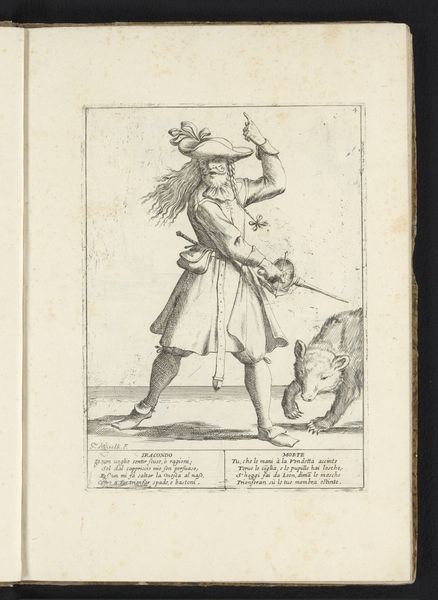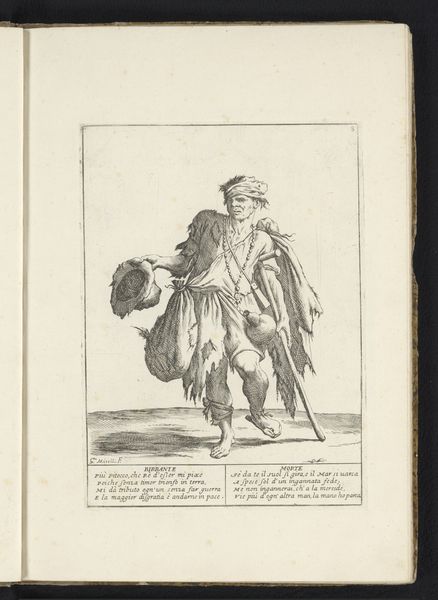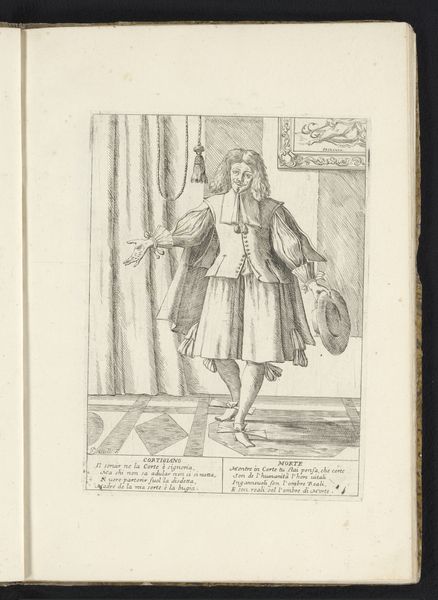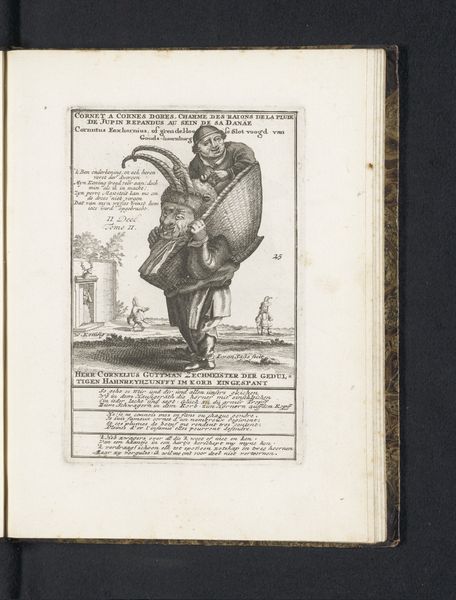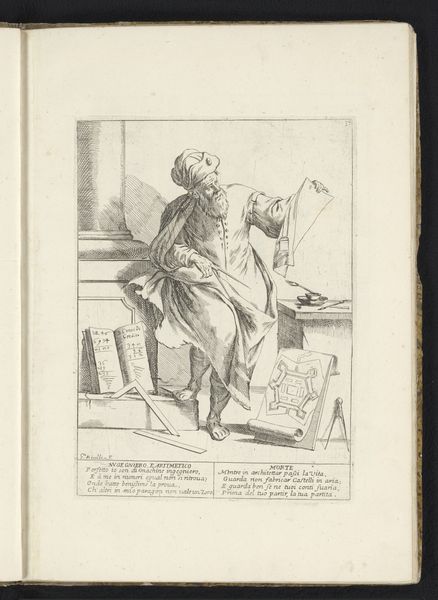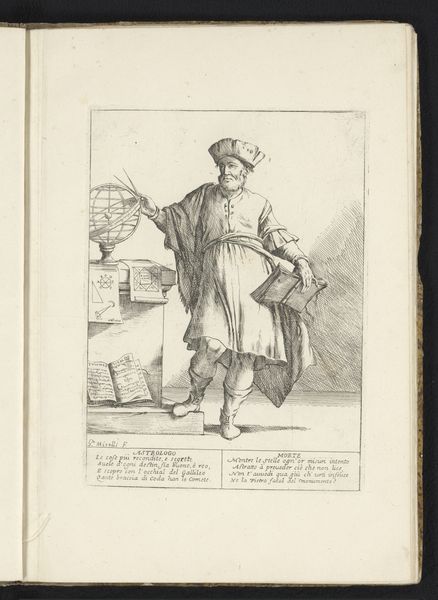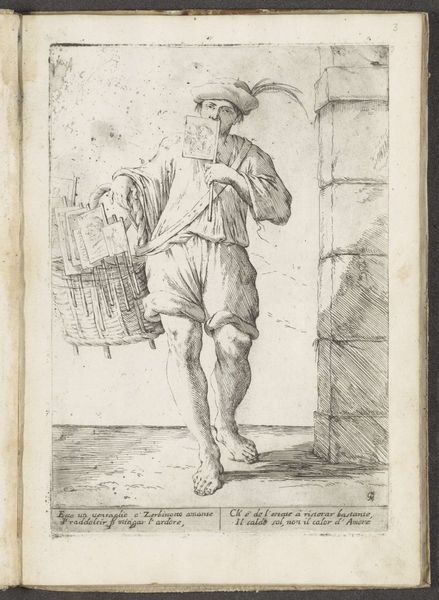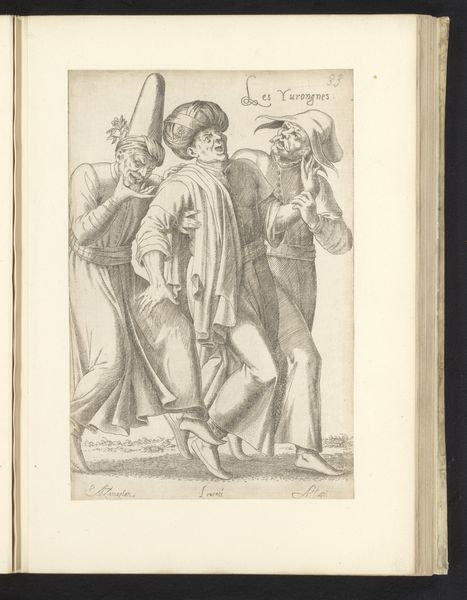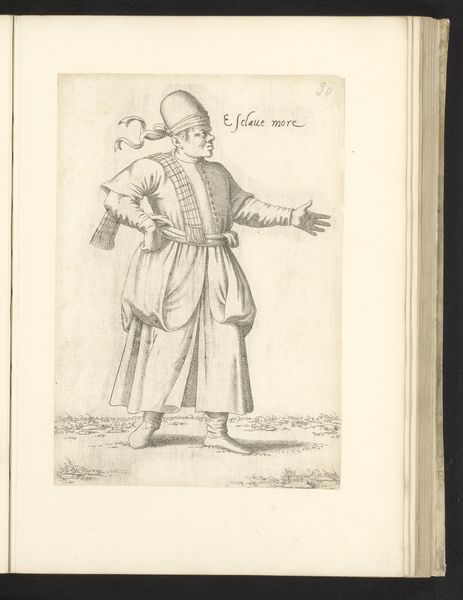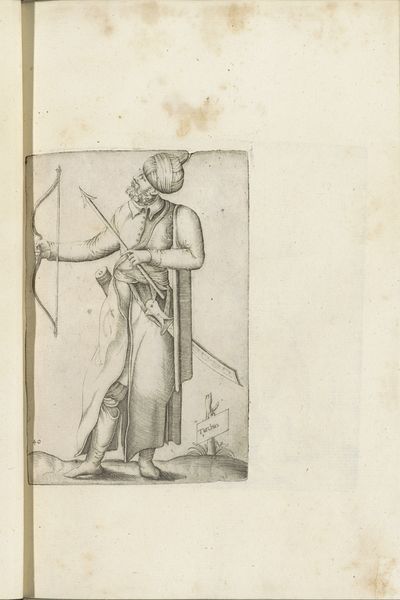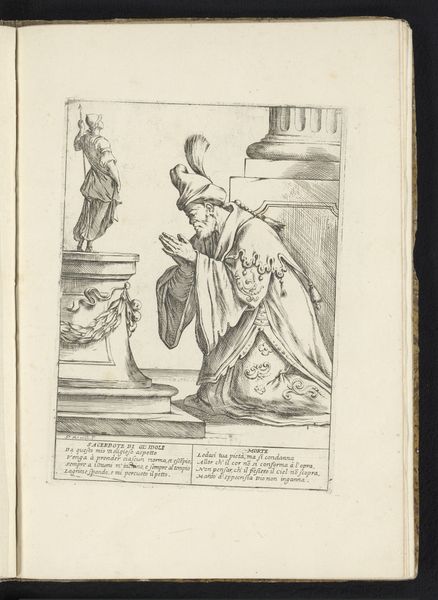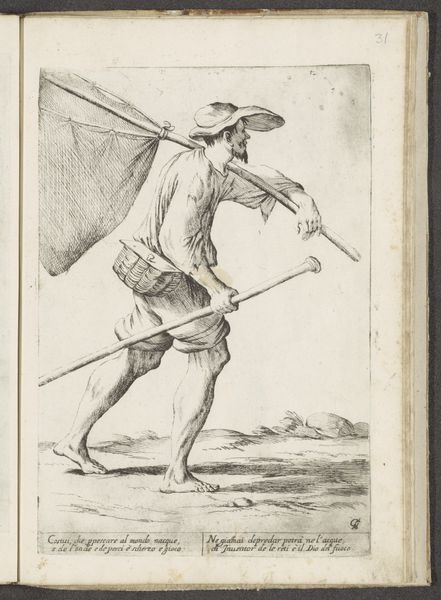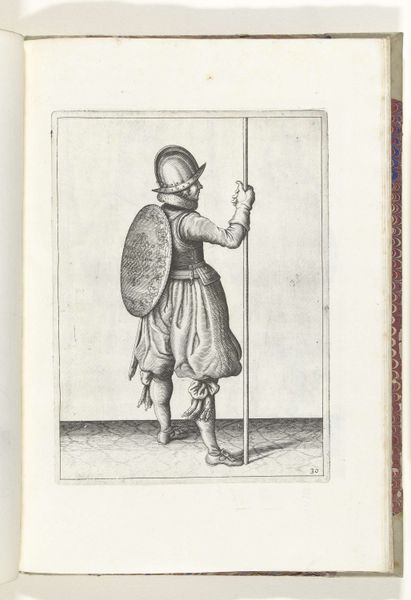
drawing, etching, ink, pen
#
portrait
#
drawing
#
narrative-art
#
baroque
#
pen drawing
#
etching
#
figuration
#
ink
#
pen
Dimensions: height 275 mm, width 200 mm, height 394 mm, width 280 mm
Copyright: Rijks Museum: Open Domain
Editor: This is "De komediant" by Giuseppe Maria Mitelli, created around 1675. It's an etching, ink, and pen drawing. It’s quite striking – a lone figure in what seems to be a theatrical pose. What strikes you most about it? Curator: For me, it’s the layered performance within performance that commands attention. We have a “komediant”, likely a figure from the commedia dell'arte tradition, which was popular then. It represented stock characters and improvised theatre. Yet, the very inscription hints at themes of ‘comedy’ and ‘death’ suggesting that while the surface displays light-hearted comedy, darker undertones prevail, such as the ever-present shadow of mortality lurking just behind the curtain. Does this representation reflect actual life, perhaps suggesting the role of performance and identity within Baroque culture itself? Editor: I see what you mean! The figure's posture is lively, but his eyes seem…melancholic. Is that a commentary on the performer's actual lived experience? Curator: Exactly! Think about the socio-political conditions. Baroque art often grapples with contrasts - extravagance and piety, illusion and reality. A comedian, in a rigidly stratified society, occupies a unique, perhaps precarious position. The comedic character is unbound by normal rules yet is reliant on an elite patron or a generous public for their livelihood. This drawing asks us, “what are the tensions implicit within the construction and marketing of the persona, and who benefits?" This lens encourages us to acknowledge that such drawings do not merely entertain, but offer implicit critiques of Baroque era society and social values. Editor: So it's not just about the surface-level performance, but about what that performance reveals about power dynamics. Curator: Precisely. Consider the intended audience of such works. Etchings were reproducible and meant for circulation, disseminating these subversive perspectives to a wider public. Thinking critically, even a seemingly frivolous subject like a commedia dell'arte performer becomes fertile ground to understand issues related to labor, class, and the subtle acts of resistance embedded within artistic expression. Editor: This has really transformed my view of the work! I initially saw only the comedic figure, but now, through this intersectional lens, I see so much more: the layers of performance, socio-political critiques and undercurrents beneath seemingly simple portrayals of comic performers. Curator: Exactly! The artwork becomes less a decorative tableau, and instead turns into a testament and window onto past sociopolitical themes and undercurrents, which are always helpful for thinking through contemporary dynamics.
Comments
No comments
Be the first to comment and join the conversation on the ultimate creative platform.
